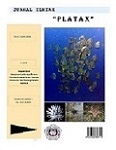Water Quality Status of Raja Ampat Island Natural Marine ReserveBased on the Seawater Physical Parameters
DOI:
https://doi.org/10.35800/jip.8.1.2020.28292Abstract
Observation of water quality in Raja Ampat Islands Natural Water Reserve (SAP Kepulauan Raja Ampat), was carried out in August-September 2019. This study aims to determine the water quality and the pollution’s status based on the water physical parameters. Measurement of all parameters was conducted in-situ using the EXO-2 device, while the water clarity was measured with a Secchi disk. The results of statistical analysis using the T-Test showed that the TDS content in the surface layer compared to the bottom was significantly different. Pollution index calculation results show that the waters of the Raja Ampat Islands are still in good condition (not polluted). Variations in temperature, salinity, brightness/clarity, turbidity, conductivity (DHL) and the dissolved solids values (TDS) are still adequate for the well-being of coral reefs and various marine biota inhabited the waters.
Keywords: Water quality, physical characteristics, Raja Ampat
 ABSTRAK
Pengamatan kualitas air di SAP Kepulauan Raja Ampat, telah dilaksanakan pada bulan Agustus-September 2019. Penelitian ini bertujuan untuk mengetahui kualitas perairan dan menentukan status pencemaran berdasarkan parameter fisika air laut. Pengukuran semua parameter dilakukan secara in situ (langsung di lapangan) dengan menggunakan alat EXO-2, kecuali kecerahan air laut diukur dengan cakram sechi (sechi disk). Hasil analisis statistik dengan menggunakan uji-t menunjukkan bahwa kandungan TDS di lapisan permukaan dengan dekat dasar adalah berbeda nyata. Hasil perhitungan indeks pencemaran menunjukkan perairan Kepulauan Raja Ampat masih dalam kondisi baik (tidak tercemar). Variasi nilai suhu, salinitas, kecerahan, kekeruhan, konduktivitas (DHL) dan jumlah zat padat terlarut (TDS) masih baik untuk kehidupan dan perkembangan terumbu karang serta berbagai biota laut yang hidup didalamnya.
Kata kunci: Kualitas air, karakteristik fisika, Raja Ampat
References
Banjarnahor, J., 2000. Atlas Ekosistem Pesisir Tanah Grogot, Kalimantan Timur. Puslitbang Oseanologi – LIPI Jakarta, hal. 17.
Davis, S. N. dan Wiest, R. J. M. D. 1966. Hydrogeology. John Wiley and Sons, Inc., New York.
Edward dan Z. Tarigan, 2003. Pemantauan kondisi hidrologi diperairan Raha P. Muna, Sulawesi Tenggara Dalam Kaitannya Dengan Kondisi Terumbu Karang. Makara, Sains, Vol. 7 (2): 73-82.
Effendi, H. 2003. Telaah kualitas air bagi pengelolaan sumberdaya dan lingkungan perairan. Cetakan kelima. Yogjakarta: Kanisius.
Eliza, 1992. Dampak Pariwisata terhadap pertumbuhan terumbu karang. Lingkungan dan Pembangunan. Vol. 12(3): 150-170.
Mechta, J., 1989. On estuarine cohesive sediment suspension behavior. Jour. of Geophysical Research. Vol. 94.C10:303-314.
Menteri Negara LH, 2003. Keputusan Menteri Negara Lingkungan Hidup No. 115 Tahun 2003 Tentang Pedoman Penentuan Status Mutu Air. Jakarta, hal. 11.
Menteri Negara LH, 2004. Keputusan Menteri Negara Lingkungan Hidup No.51 Tahun 2004 Tentang Baku Mutu Air Laut Untuk Biota Laut. Jakarta, hal. 32.
Menteri Negara KP, 2009. Keputusan Menteri Kelautan dan Perikanan Republik Indonesia No. Kep.64/ Men/2009 Tentang Penetapan Kawasan Konservasi Perairan Nasional Kepulauan Raja Ampat dan Laut di sekitarnya di Provinsi Papua Barat. Jakarta.
Nemerow, N. L. and Sumitomo, H., 1970. Benefits of Water Quality Enhancement. Report No. 16110 DAJ. prepared for the U.S. Environmental Protection Agency. December 1970. Syracuse University, New York.
Nybakken, W.J., 1988. Biologi Laut. Suatu Pendekatan Ekologis. Gramedia, Jakarta: 459 hal.
Nontji, A., 2002. Laut Nusantara. Penerbit Djambatan. Jakarta: 59-67.
Odum, E.P., 1971. Fundamentals of Ecology. W.B. Saunders Company. Philadelphia: 125 pp.
Officer, C.B., 1976. Physical Oceanography of Estuaries and Associated Coastal Waters.John Willey and Sons. New York: 465 pp.
Pond and Pickard, 1978. Introductory Dynamical Oceanography. Pergamon Press. Pub. Headington Hill Hall, Oxford: 486 pp.
Romimohtarto, K dan Thayib, S.S., 1982. Kondisi Lingkungan dan Laut di Indonesia, LON-LIPI, Jakarta: 246 hal.
Sudiarta, I. K. 1995. Struktur Komunitas Biota Ekosistem Terumbu Karang dan Pemintakatan Kawasan Wisata Bahari Pulau Lembongan, Bali. Program Pasca Sarjana lnstitut Pertanian Bogor. 215 hal.
Sukarno, M., M. Hutomo, M. K. Moosa dan P. Darsono 1981. Temmbu Karang di Indonesia. Sumberdaya, Permasalahan dan Pengelolaan-nya. Proyek Penelitian Potensi Sumberdaya Alam di Indonesia. Lembaga Oseanologi Nasional. LIPI, Jakarta. 112 hal.
Supriyadi, I.H., Cappenberg, H.A., Souhoka, J., Makatipu, P.Ch. dan M. Hafizt, 2017. Kondisi terumbu karang, lamun dan mangrove di Suaka Alam Perairan Kabupaten Raja Ampat, Provinsi Papua Barat. Jurnal Penelitiann Perikanan Indonesia. Vol. 23(4):241-252.
Warwick, R.M. and K.R. Clarke. 1994. Relearning the ABC: taxonomic changes and abundance/ biomass relationships in disturbed benthic communities. Marine Biology 118: 739-744.
Wilson, P.C., 2010. Water Quality Notes: Water Clarity (Turbidity, Suspended Solids, and Color). Department of Soil and Water Science. The University of Florida.
Downloads
Published
How to Cite
Issue
Section
License
COPYRIGHT
Authors who publish with this journal agree to the following terms:
Authors hold their copyright and grant this journal the privilege of first publication, with the work simultaneously licensed under a Creative Commons Attribution License that permits others to impart the work with an acknowledgment of the work's origin and initial publication by this journal.
Authors can enter into separate or additional contractual arrangements for the non-exclusive distribution of the journal's published version of the work (for example, post it to an institutional repository or publish it in a book), with an acknowledgment of its underlying publication in this journal.
Authors are permitted and encouraged to post their work online (for example, in institutional repositories or on their website) as it can lead to productive exchanges, as well as earlier and greater citation of the published work (See The Effect of Open Access).




















